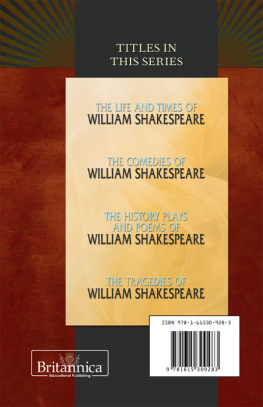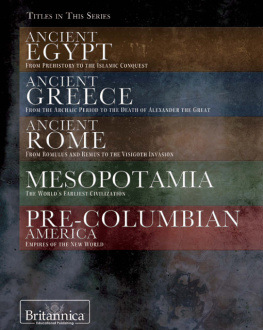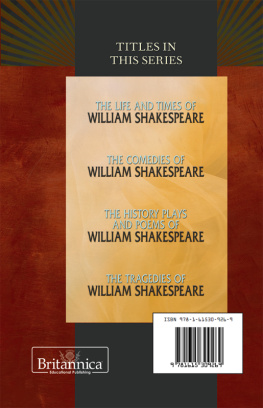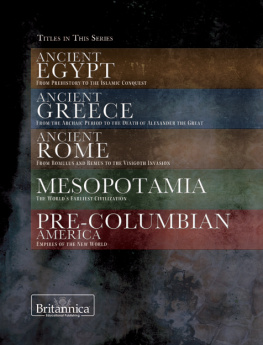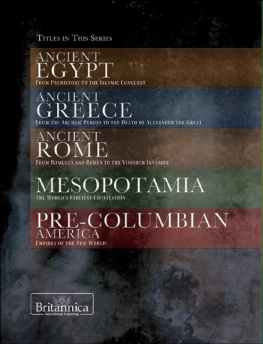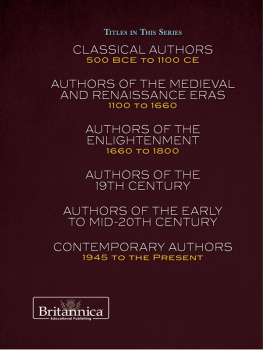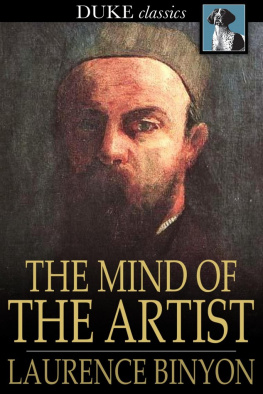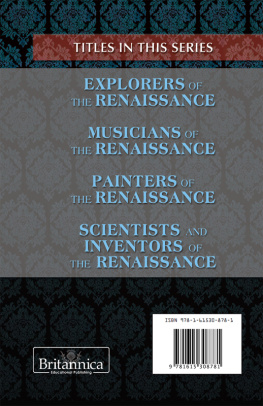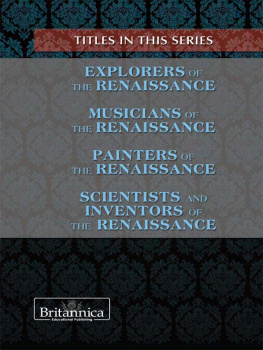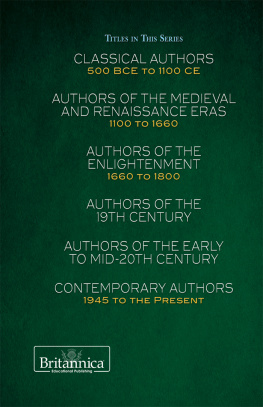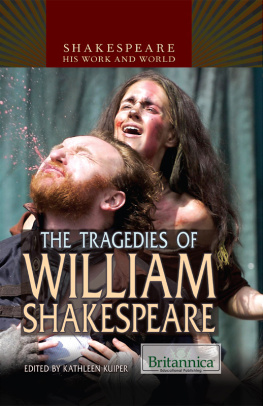Kathleen Kuiper - The 100 Most Influential Painters & Sculptors of the Renaissance
Here you can read online Kathleen Kuiper - The 100 Most Influential Painters & Sculptors of the Renaissance full text of the book (entire story) in english for free. Download pdf and epub, get meaning, cover and reviews about this ebook. year: 2010, publisher: Rosen Education Service, genre: Detective and thriller. Description of the work, (preface) as well as reviews are available. Best literature library LitArk.com created for fans of good reading and offers a wide selection of genres:
Romance novel
Science fiction
Adventure
Detective
Science
History
Home and family
Prose
Art
Politics
Computer
Non-fiction
Religion
Business
Children
Humor
Choose a favorite category and find really read worthwhile books. Enjoy immersion in the world of imagination, feel the emotions of the characters or learn something new for yourself, make an fascinating discovery.

- Book:The 100 Most Influential Painters & Sculptors of the Renaissance
- Author:
- Publisher:Rosen Education Service
- Genre:
- Year:2010
- Rating:5 / 5
- Favourites:Add to favourites
- Your mark:
- 100
- 1
- 2
- 3
- 4
- 5
The 100 Most Influential Painters & Sculptors of the Renaissance: summary, description and annotation
We offer to read an annotation, description, summary or preface (depends on what the author of the book "The 100 Most Influential Painters & Sculptors of the Renaissance" wrote himself). If you haven't found the necessary information about the book — write in the comments, we will try to find it.
Kathleen Kuiper: author's other books
Who wrote The 100 Most Influential Painters & Sculptors of the Renaissance? Find out the surname, the name of the author of the book and a list of all author's works by series.
The 100 Most Influential Painters & Sculptors of the Renaissance — read online for free the complete book (whole text) full work
Below is the text of the book, divided by pages. System saving the place of the last page read, allows you to conveniently read the book "The 100 Most Influential Painters & Sculptors of the Renaissance" online for free, without having to search again every time where you left off. Put a bookmark, and you can go to the page where you finished reading at any time.
Font size:
Interval:
Bookmark:
THE 100 MOST INFLUENTIAL PAINTERS & SCULPTORS OF THE RENAISSANCE
THE BRITANNICA GUIDE TO THE WORLDS MOST INFLUENTIAL PEOPLE
EDITED BY KATHLEEN KUIPER, MANAGER, ARTS AND CULTURE

Published in 2010 by Britannica Educational Publishing
(a trademark of Encyclopdia Britannica, Inc.)
in association with Rosen Educational Services, LLC
29 East 21st Street, New York, NY 10010.
Copyright 2010 Encyclopdia Britannica, Inc. Britannica, Encyclopdia Britannica, and the Thistle logo are registered trademarks of Encyclopdia Britannica, Inc. All rights reserved.
Rosen Educational Services materials copyright 2010 Rosen Educational Services, LLC. All rights reserved.
Distributed exclusively by Rosen Educational Services.
For a listing of additional Britannica Educational Publishing titles, call toll free (800) 237-9932.
First Edition
Britannica Educational Publishing
Michael I. Levy: Executive Editor
Marilyn L. Barton: Senior Coordinator, Production Control
Steven Bosco: Director, Editorial Technologies
Lisa S. Braucher: Senior Producer and Data Editor
Yvette Charboneau: Senior Copy Editor
Kathy Nakamura: Manager, Media Acquisition
Kathleen Kuiper: Manager, Arts and Culture
Rosen Educational Services
Jeanne Nagle: Senior Editor
Nelson S: Art Director
Matthew Cauli: Designer
Introduction by Janey Levy
Library of Congress Cataloging-in-Publication Data
The 100 most influential painters & sculptors of the Renaissance / edited by Kathleen
Kuiper.1st ed.
p. cm.(The Britannica guide to the worlds most influential people)
In association with Britannica Educational Publishing, Rosen Educational Services.
Includes index.
ISBN 978-1-61530-043-3 (eBook)
1. Painting, RenaissanceJuvenile literature. 2. Sculpture, RenaissanceJuvenile literature. 3. PaintersEuropeBiographyJuvenile literature. 4. Sculptors PaintersEuropeBiographyJuvenile literature. I. Kuiper, Kathleen. II. Title: One hundred most influential painters & sculptors of the Renaissance.
ND170.A14 2010
709.024dc22
2009023697
On the cover: Self-portrait of Leonardo da Vinci, one of the most influential artists of the Renaissance or any other period. Stuart Gregory/Photographers Choice RF/Getty Images
Photo Credits: pp. 8, 355, 357, 359 www.istockphoto.com.








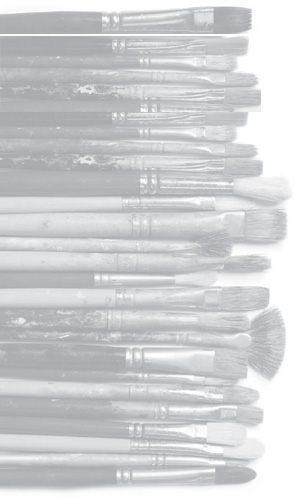
O ne of the best known and most celebrated of all periods in history, the Renaissance was a time of momentous change in European art and civilization, representing a transition from the medieval world to the modern one. In fact, when historians speak of early modern Europe, they are referring to the period encompassed by the Renaissance.
For most people, the idea of the Renaissance is tightly bound with Italy, and fully two-thirds of the painters and sculptors surveyed in this book are Italian. Yet the Renaissance was hardly confined to Italy. One has only to think of some of the most famous and familiar names of the period: Albrecht Drer and Hans Holbein the Younger (Germany), or Hironymus Bosch and Pieter Bruegel the Elder (the Netherlands). These and other great artists from France, Spain, and England are among those treated here.
Still, the Renaissance remains closely identified with Italy, and part of the reason for this rests on the terms inception and original meaning. As is often the case with periods of art history, the Renaissance received its name from scholars of a later time. The term Renaissance, which literally means rebirth, was first employed in the late 18th century, when it was used to describe the reappearance of Classical (ancient Greek and Roman) architectural forms in 16th-century Italian buildings. (Interestingly, it was French, not Italian, art historians who coined the term.) Over time, the term came to be applied not only to architecture but also to painting, sculpture, metalwork, ivory carving, and other art forms.
Generally speaking, scholars consider the Renaissance to cover the period in Europe from about 1400 to around 1600, although those dates are not hard and fast. Precise dates vary among regions and among art forms. Within the period of the Renaissance, art historians recognize three primary divisions. The early Renaissance extends from about 1420 to 1495. The High Renaissance covers a much shorter span of timefrom 1495 to 1520. Late Renaissance painting and the style known as Mannerism comprise the remainder of the period.
Of course, it would be a mistake to believe the early Renaissance represented a sudden and complete break with previous art styles, mysteriously springing into being fully formed, like Athena from the brow of Zeus. Although the Renaissance was an era of far-reaching transformations, it nonetheless rests firmly on foundations that date back to earlier centuries.
Perhaps the element that stands out most widely and clearly in Renaissance art, and sets it apart from medieval art, is its emphasis on humanity and the human realm. This is not to say that the religious subjects that dominated earlier art disappeared from Renaissance art; that was hardly the case. However, the figures in Renaissance religious artno matter how idealized they might bewere not the two-dimensional, sometimes ethereal and abstract figures of medieval art, but solid human figures who occupied three-dimensional space and were placed firmly on Earth.
Godly themes and earthly representation meld in the art of Fra Angelico, a 15th-century Dominican friar and painter who incorporated both religious attitude and Classical influences into his work. Sharply drawn and delineated human figures adorn his many altarpieces and frescoes. Angelicos influence reportedly extended throughout his native Florence, to amateurs and respected masters alike. The accomplished painter Fra Filippo Lippi, who was in great demand in the mid-1400s, is said to have borrowed heavily from Fra Angelico, mimicking the latters style but infusing it with his own techniques and narrative spirit.
In addition, the creators of religious Renaissance art expressed drama and emotion in human terms. Beyond this development of more human qualities in religious art, the Renaissance also saw the growth of art categories that had little place in the medieval worldincluding portraits that were independent artworks and not secondary elements in religious images, subjects from Classical mythology, landscapes, and genre painting (scenes of daily life). One of the Renaissances most important and beloved painters, Sandro Botticelli, was adept at both the periods firmly entrenched religious and the emerging secular aspects. In fact, many art scholars believe Botticellis historical canvases are equal or superior to the devotional pieces he was commissioned to create for a number of Florentine churches. He also was frequently called upon to paint portraits of his patrons, who were members of the infamous Medici family. Botticelli was even know to serve both masters at once; three patriarchs of the Medici clan are depicted as the Magi (the kings who paid homage to Jesus at his birth) in one of the masters most famous works,
Next pageFont size:
Interval:
Bookmark:
Similar books «The 100 Most Influential Painters & Sculptors of the Renaissance»
Look at similar books to The 100 Most Influential Painters & Sculptors of the Renaissance. We have selected literature similar in name and meaning in the hope of providing readers with more options to find new, interesting, not yet read works.
Discussion, reviews of the book The 100 Most Influential Painters & Sculptors of the Renaissance and just readers' own opinions. Leave your comments, write what you think about the work, its meaning or the main characters. Specify what exactly you liked and what you didn't like, and why you think so.

